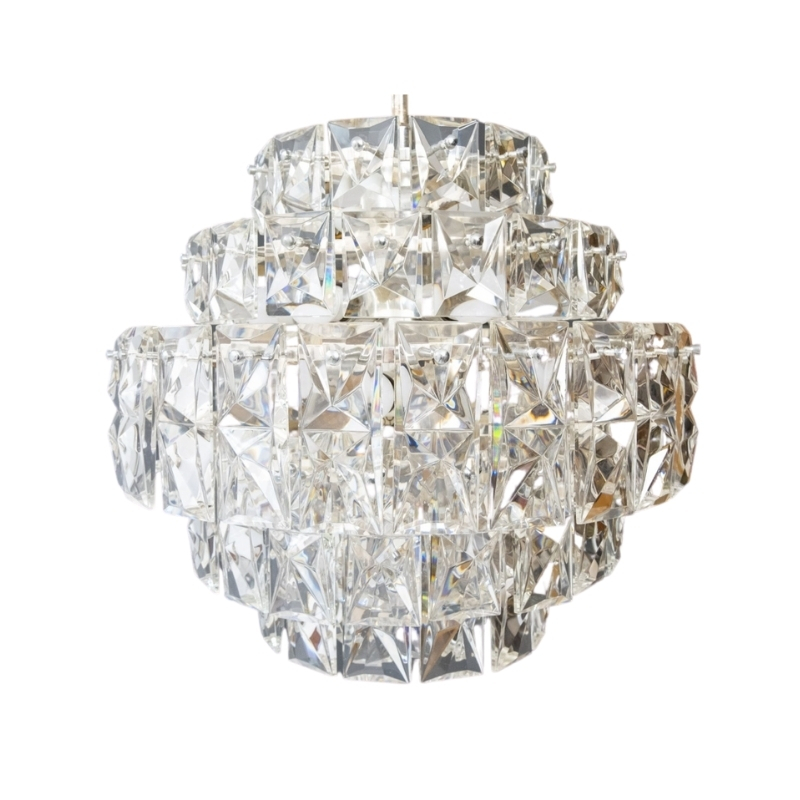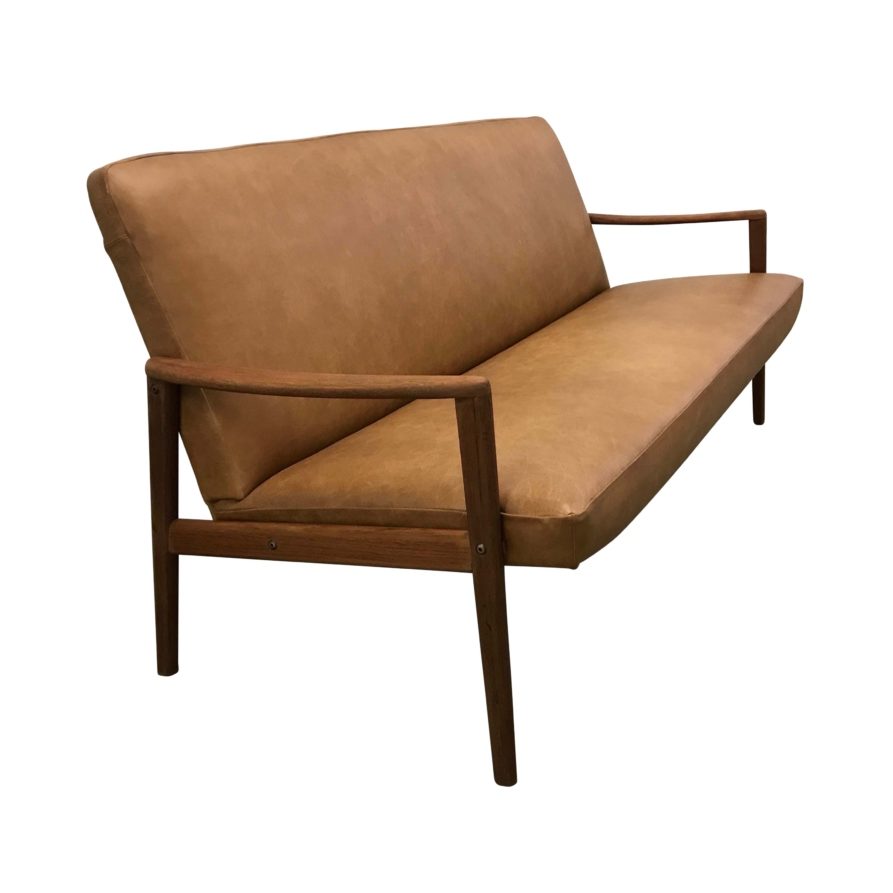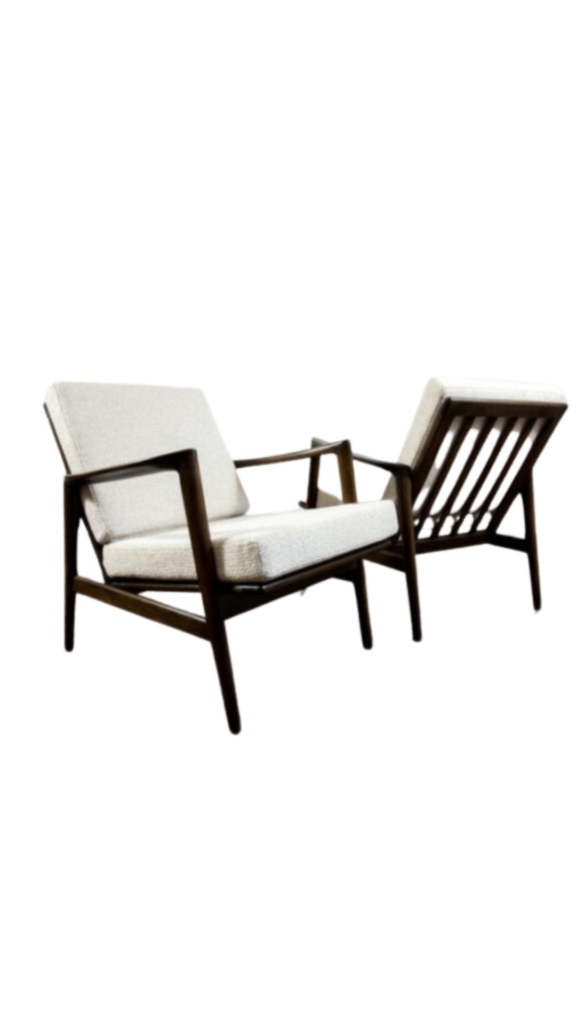okay, someone tell me if I'm way out of line, believe me I'd love to be proved wrong, but I've just got autocad and 3ds max and have very quickly got into the modifying and warping tools on solids and if Zaha Hadid (and plenty of artists besides) arent just spending a few hours (or minutes) making cool shapes and then ringing up a cnc shop or rotomolder and claiming to be a furniture designer....I'll eat my hat.
HP,
I think you are onto something.
Ford went through a design phase called "New Edge" styling. The first Ford Focus was the purest example of it. Basically, it was design based on what canned computer algorithms could generate in way of curvilear functions that could be readily transformed from CAD to CAM.
The moderns did something like this a century before when they resorted to easy to quantify and construct geometric forms articulated out of a geometric form language.
There is nothing intrinsically wrong with resorting to easy to manipulate, easy to replicate design functions in the hands of a great designer.
The original Ford Focus was a pretty interesting design.
But all designers hands are tied somewhat by these reductive form languages, regardless of how organically they "fit" with new design and manufacturing technologies.
I do not believe for a second, for one example, that Frank Gehry has the mathematical sophistication to generate from scratch the curviliear forms he's been working with. He has a great imagination, just like someone like Gaudi had. But unlike Gaudi, who had cheap labor and cheap materials to work with, and so could draw plans on paper and then improvise with craftsmen onsite to construct something close to what he drew, Gehry, and others like him, today, have to be able to deliver manufacturable drawing files to a wide range of off-site component manufacturers that can then be assembled on the building site ASAP. That's how it is today.
In turn, Gehry can't free hand sketch, and then do formalized drawings of what ever the heck is in his head that do not recognize the constraints of computer assisted and robotized manufacturing. In the end, the legacy of CAD is to create a medium of design expression increasingly within the rational (note I did not say desirable) constraints of CAM.
The fallout is this: designers, like Gehry, and most everyone else I would suppose, are literally being constrained by what is feasible to CAD and then to CAM, not by what is actually rational in design, and feasible to be built by other means.
Put another way, CAD CAM has become the palette on which the designer makes his choices. What can be done one that palette is his opportunity set of design choices. Those choices are necessarily choices that can be formalized and expressed digitally and then reexpressed robotically in materials.
Hence, there is the same loss in subtlety and in limited scope in design that occurs in the transition of music from analog to the digital. Much is gained by going digital, but much is lost, too.
I am
not aware that there are any limits to the forms that can be drawn by a computer program. There may be limits to the forms that particular materials can be persuaded to take -- but not many.
As I understand Frank Gehry's method, he sketches and models, after which the desired forms are refined and drawn in CAD by others. Is there really so much difference between this method, and Gaudi's, as you describe it ? In both cases, forms are determined by a designer and realized by craftsmen -- albeit with different tools.
The aim of the current technologies seems to be an ever-widening scope of possibilities re material and form. What are the limits of CAM that you refer to ?
The problems with CAD seem to be technical in nature; the many glitches and hang-ups (which would defeat me completely as a draftsman) are frequently discussed on architecture sites like DesignCommunity and Archinect, where many architecture students and professionals hang out.
Dear SDR
I also have that strange impression that there are no restrictions in 3D programs and yet... I can not speak for DCWilson, at least not in great length, but there are some inherent limitations in most programs. Maybe they are minor, but they seem to be recognizable in the products. But, the most important limitation seems to me the limitless possibilities. If that sounds like a contradiction, allow me to explain. The tempation to stretch, to manipulate to extrude, to curve etc. seems to be so strong that most clearly computer generated shapes are very seldom refined or well thought out. It seems as if the image that pops up on the screen is charming the designer instead of the designer charming his or her audience. The other day a looked at a few pictures of Ron Arad's four leaf clover chair and I was surprised by the amount of typical "computer-un-perfections" Curves that are mot merging properly, transitions that are clearly not the result of an intention but of a mathematical formula going wrong. Looking at all the wall to wall previews of the Detroit car show (Both NBC and CBC here come to us via Detroit)and looking at all these concept cars and new models I wondered if we had gained all that much since clay modeling.
Architecture seems to me the exception, not in imagining complex organic forms (Le Corbusier did not need a computer to design the Ronchamps (Notre Dame du Haut)chapel, nor did Roger Tailibert when designing the Olympic stadium in Montreal, but the execution of these organic forms has been dramatically improuved by the use of computers.
All in all I have to agree with HP's first reaction. To many "organic" products both in architecture and product design are the result of "look what I can do" rather than knowing why you do it.
http://www.imtl.org/edifices/Stade-Olympique-Montreal.php?id=303
As a colorful friend says...
dogs lick their balls, because they can, not because they need to.
That same colorful friend says: academics research arcanity, because they can get grants to do it, not because it needs researching. He calls the tendency in the academy, amusingly enough, academic ball licking. They often research things, because they can, not because it needs researching.
I would say Koen may, in his ususal cultivated way, be describing what my more earthy acquaintance might call architectural ball licking. Some of these buildings are being built in these algorithm driven shapes, because they can be, rather than because they need to be.
That being said, I have worked with computers a lot and I have never worked on any problem on a computer that the software and interface did not shape in some way or another the limits and ways in which I thought about devising the solution.
I think differently about problems in my head than when I think about them via drawing with pencil and paper. I often discover relationships once I put pencil to paper that I did not see before doing so. Sometimes my pencil magically makes a move that my mind was not consciously making. Its great. But at the same time, I get so enchanted with the side view of things I draw that the thing I draw could only look good and work well in a world as two dimensionally flat as a piece of paper.
Likewise I think differently about problems when I think through the computer than when I think through pencil and paper. I was examining the Middle East through ARC Info GIS's 3D globe and comparing it to looking at a flat map of the region. It was striking how differently I saw the world via the ARC Info 3D image than through the flat map. I focused on different relationships, different mountain passes and plateaus, as being vital. I began to understand the USSR's interest in the Caspian region and Iraq and Iran much more readily. But at the same time, I paid less attention to Israel's geopolitical position for some inexplicable reason.
But here is the thing: both the 3D globe view on the computer screen and the flat map on the screen are abstractions of aspects of reality. Not reality. Focusing on one triggers different views than focusing the other. Not necessarily more accurate ones, but different ones.
Now to come back to Frank Gehry, if SDR says he draws things first and then turns them over to his assistants who are nifty at running rendering software, well, then the analog to digital translation issue/problem I am referring to just becomes a first derivative, if you will, of Gehry's pencil sketches.
pt. 2
Now I would bet any amount of money that Frank Gehry HAS played with rendering softwares, even if its just Google sketch, or "shapes" in Microsoft Excel, or something.
I also think that one cannot experience the power of computer algorithms morph shapes without one's perception, or at least the emphasis of one's perception, of what shapes are feasible IMHO.
Just as early moderns were struck by the motion and dynamism of machines and responded with cubist painting, cubist sculpture and cubist architecture, I think what we are looking at today is contemporary artists and craftsmen being struck by topological and morhological dynamics of the digital information age and responding to it in plastic, static forms that express this phenomenon.
Now as we all know, expressionism is not the same as rational design. Expressionism tries to express how we feel about somethign. Rational design tries to rational fit form to function as elegantly and beautifully as possible.
So: when Gehry makes Biblao, he is expressing for me in building shapes my barely articulate feelings about the topological and morphological dynamics that are sweeping through my world on the wings of algorithms and the computers they operate within. And these algorithms are changing my world profoundly, causing convulsions in orders, and so on.
But frankly (pun intended), Gehry's Bilbao, much as I love it for giving voice to my barely articulate feelings, doesn't seem to me very rational architecture. There is nothing necessary or essential about the way it is designed. It is built the way it is, because it can be and because it expresses a feeling about our age.
In the short run, humanity needs expressionism to deal with the shock of the new sometimes.
In the long run, humanity needs great art and practical architecture and design to find ways to make the supremely functional be rational, elegant, and beautiful.
Every movement has an expressive aspect that gives voice to the barely feelings of its time, but great art, great architecture and great design has within it the supreme grandeur of function rationally, elegantly and beautifully constructed.
Or so I think presently.
.
but even these 'irrational' forms require rational engineering? Otherwise they would, of course, collapse.
Koen is right, its very easy to become charmed, but something like Kapoors sculpture above actually would have required a little retraint but Hadid din't know when to quit. I'm sure there was a lot of engineering involved but the overall shape is mild compared to some of the fantastic confections I've been rendering out.
I think the software can work well in fine art and architecture but the middle ground of product design suffers at the hands of unbridled enthusiasm, I was dissappointed to hear about Arads work, the computer can smooth out those imperfections with a few mouse clicks I'm sure.
Thanks guys for the very intelligent comments.
Thank
you, both. I am enlightened -- well, beyond where I was before. Having only managed one table on SketchUp basic, I am a victim of my own ignorance.
It seems to be agreed that the medium has an influence on the message, that each object drawn and considered will appear different to us depending on its means and sources. No surprise there, I suppose, but it bears repeating. And, the very lack of limitations is its own source of trouble -- that I can imagine as well. I'm glad to hear that there may be general agreement that the computer has provided us with an embarrassment of riches, which we are still coming to terms with.
The discussion of expressive vs. objective has been in my mind lately, as I come to the end of a series of postings of my work on another website. So far, the tables I've shown have been orthogonal and thus largely reserved as to expression. They are what they are, more or less. Still to come are the designs involving angles and curves. To my mind, these are more likely to be what I would call "expressive." This may or may not be because they may begin to remind the observer, consciously or unconsciously, of living things -- animals, perhaps, or plant life -- or at least of the movement that living things exhibit.
I imagine that the greater difficulty in making a cabriole leg (none of THOSE in even the most expressive of my work, thank you !) as opposed to a simple straight one, has always been the greater empathetic content of something that reminds us of an animal or a human body part. If we say we value something that is "alive," what better way than to evoke familiar forms of life, I guess ? Thus, even the slightest taper to a part brings it into the realm of the living. . .to say nothing of the full-blown animosity (?) of those objects above.
http://savewright.org/wright_chat/viewtopic.php?t=2474#2474http://savewright.org/wright_chat/viewtopic.php?t=2484#2484http://savewright.org/wright_chat/viewtopic.php?t=2510#2510
(It seems I can post only one link in the box ? Sorry. . .)
http://savewright.org/wright_chat/viewtopic.php?t=2510#2510
.
Thanks. Actually, there's more "expressive" stuff in the other two threads than I recalled. Guess I got ahead of my plan !
The second half of this thread is all "square":
http://savewright.org/wright_chat/viewtopic.php?t=2484#2484
.
Not to hijack this thread with my own concerns, but it should be said that my sketches are typically the first go-round for an idea, based on a structural concept and clothed in what I hope will be a viable functional and aesthetic form. As such, they await refinement. In particular, the proportions are not always studied and need improvement. When I draw these things, the important thing to me is to record the idea. (This caveat extends even to the finished models, I have to say.)
That said, in drawing a table the vital thing is to suitably seat a number of diners. One of the purposes of the tapered ends of most of the designs is to bring those seated into a group that can easily see and join everyone else at the table. This happily coincides with what appeals to me in terms of form. A plain rectangular slab without relief of any kind is not my idea of a handsome and inviting table. Most of my tables are opened visually to the space within and beneath them, and some are given a central feature intended as a serving area, a means of displaying food and decoration -- and simultaneously providing the diners with their own territory.
That's the sales pitch, I suppose, to those who would buy a table. In truth, I don't care if I sell a table; I make these things for their own sake, and the fact that they can be used as tables is really only of secondary importance to me. I suppose this is not an uncommon state of affairs. If I wanted to make sculpture, I wouldn't be constrained by the necessities of function. But I enjoy working with some constraints; I think designers by nature like the framework of the requirements within which they work.
Oddly, this need for constraints was felt at the beginning of my education. As soon as the first sophomore year architecture problems had been undertaken, I began to feel that the made-up programs -- a real site, sometimes, but always an invented client and his imaginary needs -- didn't meet the standard of real design work. And the work I have done for real clients of the cabinetworks I have been involved with has always been done with the requirements, whatever they were and no matter how complex or even how arbitrary, as long as they were the stated needs of the job and the client, dispatched with as much fidelity as I could muster -- as was expected.
So this work of my own has been a matter of setting my own requirements, and working under those constraints -- or lack thereof. It hasn't been work, really, but play, certainly a compulsion -- and very rewarding, in the pursuit of the always-just-around-the-corner ideal.
So,
that represents a non-computer approach to designing. How about showing examples of computer "sketching" or drawing or modeling. . .?
Anybody ?
If computer design is "too easy" (is it ? not for me !) then what is the answer to that ? Is there any other answer besides better education, and more self-discipline ? Is there agreement that education should begin with hand methods, before the advantages of the computer are attempted --or is it too late for that ? (When the handheld calculator was introduced, did it spell the end of manual calulation ? Assuming there is a meaningful analogy to the present problem, was that a good or a bad thing ? Is mathematics as well understood by students as it was, or is that not an issue ?)
Have these questions been asked, or have the issues been ignored ? Is it too late to ask them ? Have we looked at what the computer revolution has meant to the quality of design ? It is readily acknowledged that the physical realization of that design had benefitted. . .
If you need any help, please contact us at – info@designaddict.com









